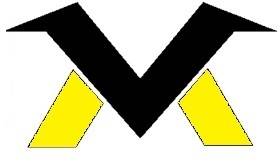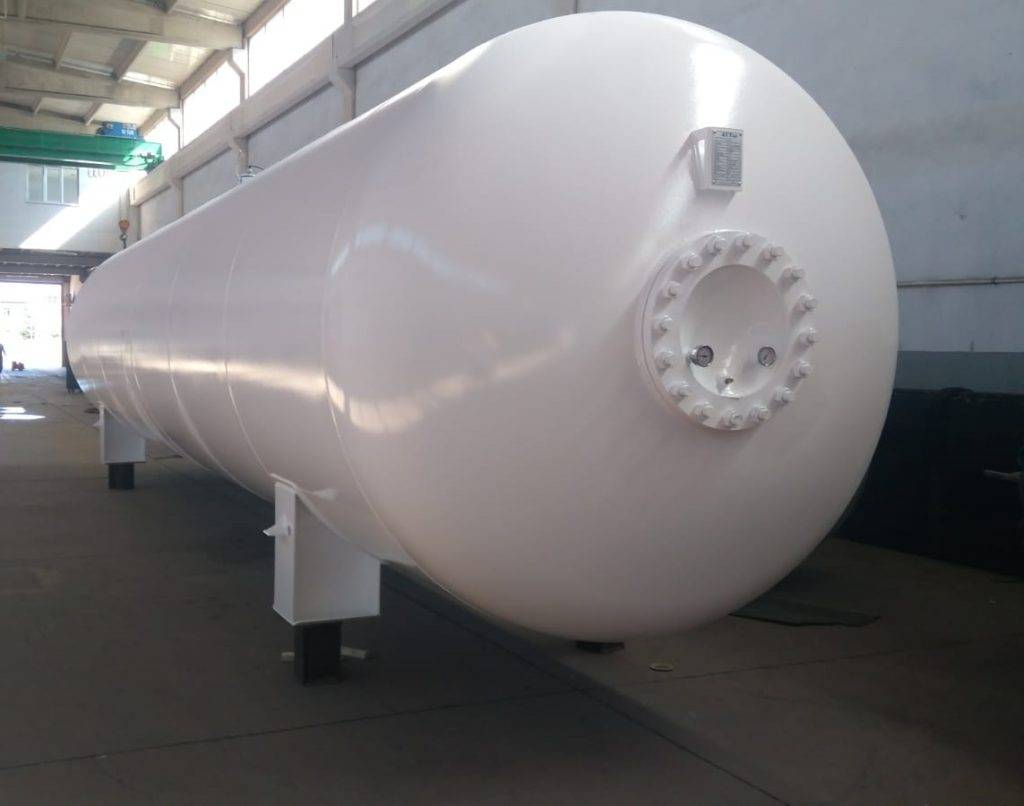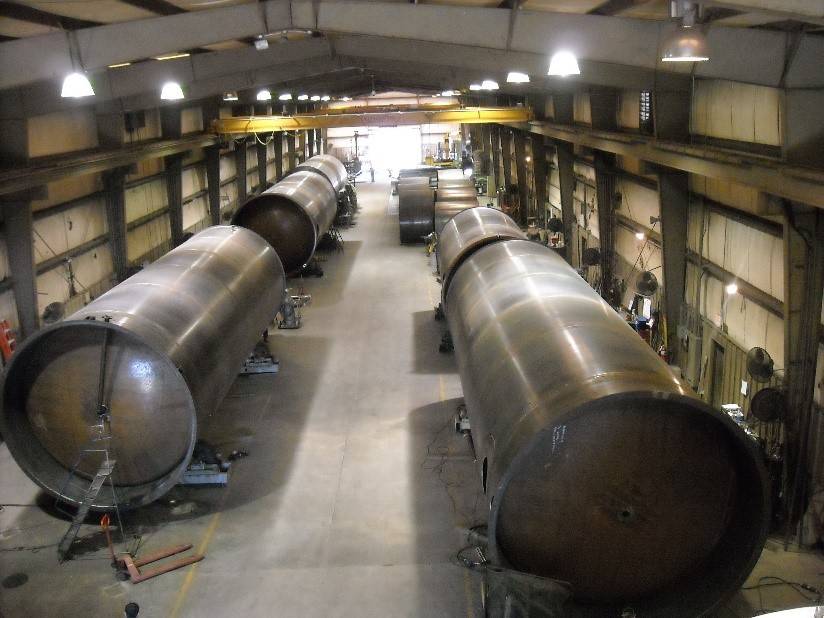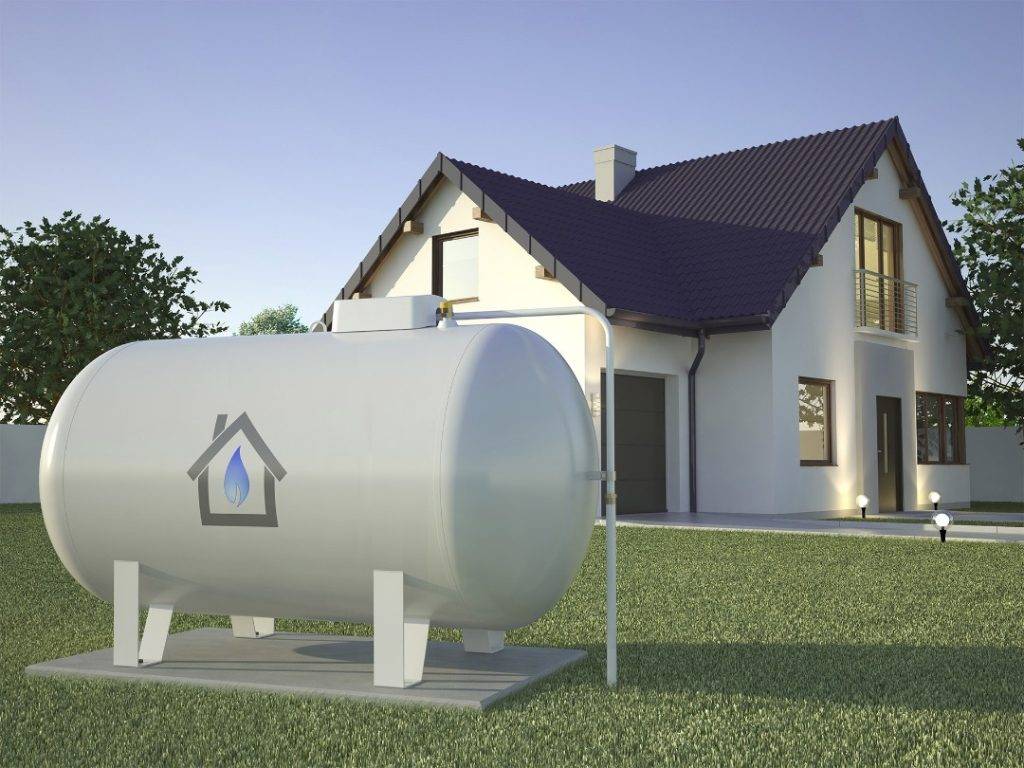LPG is an environmentally friendly, clean, safe and certified alternative fuel source widely used in residential, commercial and industrial applications..
Liquid gas tanks Household for residential use is primarily used for home heating systems and in commercial and industrial places also includes a wide range of industries and in many processes such as heating, construction, commercial cooking, It is used for cleaning, product drying, fuel storage, etc
Definition of liquefied gas according to NFPA 58:
Any substance that does not have a vapor pressure greater than the permissible limit of commercial propane and mainly of the following hydrocarbons (With the exception of propylene) or in the form of a mixture of them. These hydrocarbons are:: Propane, propylene, butane (Normal butane or isobutane) and butylenes.
In pure form, propylene has vapor pressure 132.8psigAt 70 Fahrenheit degree (21.1 C) Is.
Commercial propane vapor pressure at temp 70 Fahrenheit degree (21.1 C) 124PSIG is. Although commercial propane may contain some propylene, pure propylene does not meet the definition of a liquid gas. Pure propylene is usually used as an industrial fuel gas.
The highest grade commercial propane of the same grade HD–5 is the minimum amount of propane in it 90 is a percentage.
Design parameters of fixed liquefied gas tanks :
Definition of design pressure ( DESIGN PRESSURE ):
and – 21 It states that tanks should be designed for the worst pressure and temperature conditions expected in normal operation. This law also states that the pressure difference between inside and outside or between the chambers of a tank, during work and testing, should be considered as the maximum pressure..
Beyond the guidelines stated above, no standard provides a specific definition for design pressure.
In general, the design pressure is determined by the maximum internal or external pressure of the tank during its normal operation.. The design pressure must be sufficiently higher than any anticipated operating conditions so that all components will perform satisfactorily against the overpressure..
Maximum allowable working pressure (MAWP):
For a tank, the maximum allowable pressure at the top of the tank in its normal operating position at a specific temperature ( Usually the design temperature) is defined.
Design pressure difference and MAWP:
Suppose using the reservoir design formula and design pressure P Minimum sheet thickness no t be obtained ( For example, by pressure 10 Load thickness 7.2 mm because there is no sheet with this thickness in the market, instead of a sheet with a higher thickness, for example 8 Millimeters are used now by drawing this number, ie 8 In the design formula, we get the equivalent pressure, which is definitely a number higher than the pressure 10 Bar ( design pressure ) This number will be the same as the maximum allowable working pressure MAWP Is) So pressure MAWP It is always greater than or equal to the design pressure .
According to the code TABLE 5.2.4.2 NFPA58- Maximum allowable working pressure (MAWP) For tanks built according to the standard ASME ،PSI 250 It is provided that the maximum vapor pressure at the temperature 37.8 °C is 215 PSI. Therefore, the design pressure for a fixed liquid gas tank can be less than250PSI be also( According to the aforementioned description, the design pressure is less than or equal to MAWP Is). In fact, the maximum design pressure for a tank built according to ASME and contains pure propane250PSI and for the tank containing pure butane 100PSI is(NFPA 58 D.2.1.3)
Design parameters of liquefied gas tanks ( CARGO TANKS ):
In liquefied gas transport tanks, in addition to regulations NFPA58,ASME Compliance with regulations DOT It is also required according to the regulations DOT(ICC) In the safe filling of shipping tanks, temperature criteria 46 degrees Celsius with the explanation that for tanks with a volume of more than 1200 gallons of gas vapor pressure contained in 115 Fahrenheit degree (46 C) By DOT It is determined as the minimum design pressure of the tank.
Propane vapor pressure CP and commercial propane in 115 Fahrenheit degree (46.1 C) Respectively 211PSig and 255PSig) Is. Vapor pressure of normal butane and commercial butane at temp 115 Fahrenheit degree (46.1 C) 51Psig Is.
Liquid gas tanks are divided into fixed and mobile categories in terms of transportability, and fixed tanks are divided into two types according to the application conditions. aboveground And underground are divided
For domestic use, tanks are usually with low capacities ( Normally up to capacity 2000 Gallon ) Under the title domestic lpg tank are used .
In areas where there is no access to city gas, the use of these tanks is more evident . Due to compliance with design and construction standards, accuracy in purchasing these tanks is important .
On the other hand, there are second-hand tanks ( worked ) – Due to the lack of market control of these tanks by the relevant bodies, customers need to be more careful when buying and using .
The existence of numerous technical and specialized points in these reservoirs requires the use of the opinions of experts in this field . The best method is to use technical inspection companies in the field of pressure vessels.
All types of transport tanks cargo tank Or fixed tank or portable tank of capacity 3000 Liter 48000 Liter ( According to the specifications of the killer and road transport regulations ) are designed and built.
Standards for the design and construction of liquefied gas tanks :
ASME SEC 8 DIV1, 2, 12, ADR, DOT, EN12493, EN13445, ADMERKBLATT
Determining the size of liquefied gas storage tanks for use :
To determine the size of the required tank, the effective factors in vaporization and evaporation of liquid gas must be determined. For this purpose, heat transfer formulas are used and it can be applied when the tank is used continuously, and if the tank is used intermittently, the tank has a chance to compensate for the heat lost during use..
But the incorrect selection of tank capacity will cause pressure drop in winter and related problems. The experts of this company are ready to advise our dear customers to choose the right size of the tank.
Features of liquefied gas tanks of Vera Makhzan Khazar Company :
- The capacity of the tanks 1000 Liter up to 200000 Liter
- According to the latest version of the code ASME SEC VIII DIV I Designed, built and inspected
- With the requirements NFPA 58 they match
- with the requirements of the national standard 841 Iran match
- Tanks equipped with valves( made in the USA) REGO and are Rochester level gauges
- with pressure 250PSi and temperature range 20- until the 50+ °C are designed
- After welding, all tanks are X-ray radiographed and hydrostatically tested under water pressure
- The steel used in the construction of these tanks is compatible with liquefied gas ( Mainly steel SA516 Gr.70) Is
- The tanks are controlled and approved by the technical inspection company approved by the National Standards Organization of Iran.



